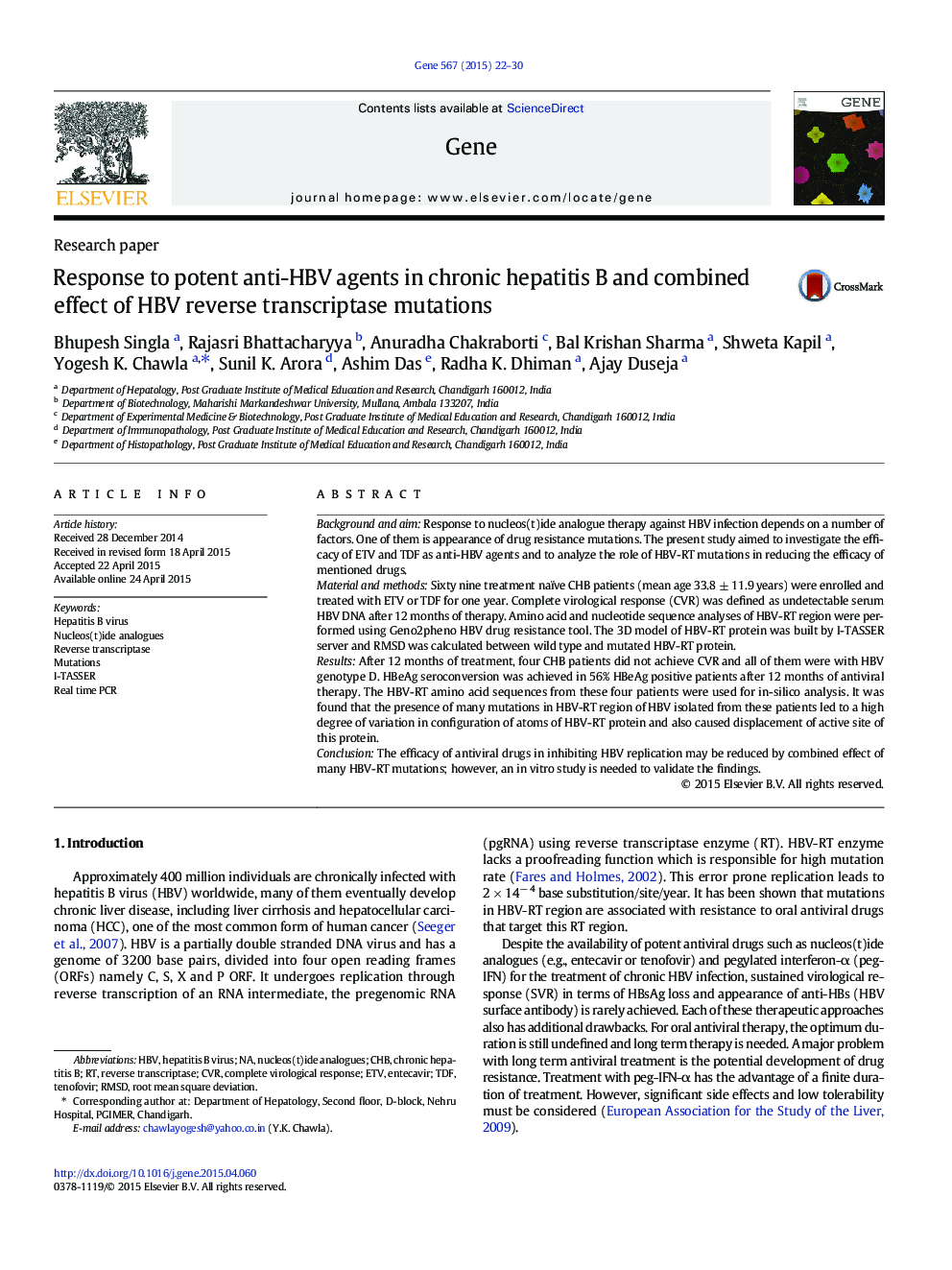| Article ID | Journal | Published Year | Pages | File Type |
|---|---|---|---|---|
| 2815734 | Gene | 2015 | 9 Pages |
Background and aimResponse to nucleos(t)ide analogue therapy against HBV infection depends on a number of factors. One of them is appearance of drug resistance mutations. The present study aimed to investigate the efficacy of ETV and TDF as anti-HBV agents and to analyze the role of HBV-RT mutations in reducing the efficacy of mentioned drugs.Material and methodsSixty nine treatment naïve CHB patients (mean age 33.8 ± 11.9 years) were enrolled and treated with ETV or TDF for one year. Complete virological response (CVR) was defined as undetectable serum HBV DNA after 12 months of therapy. Amino acid and nucleotide sequence analyses of HBV-RT region were performed using Geno2pheno HBV drug resistance tool. The 3D model of HBV-RT protein was built by I-TASSER server and RMSD was calculated between wild type and mutated HBV-RT protein.ResultsAfter 12 months of treatment, four CHB patients did not achieve CVR and all of them were with HBV genotype D. HBeAg seroconversion was achieved in 56% HBeAg positive patients after 12 months of antiviral therapy. The HBV-RT amino acid sequences from these four patients were used for in-silico analysis. It was found that the presence of many mutations in HBV-RT region of HBV isolated from these patients led to a high degree of variation in configuration of atoms of HBV-RT protein and also caused displacement of active site of this protein.ConclusionThe efficacy of antiviral drugs in inhibiting HBV replication may be reduced by combined effect of many HBV-RT mutations; however, an in vitro study is needed to validate the findings.
